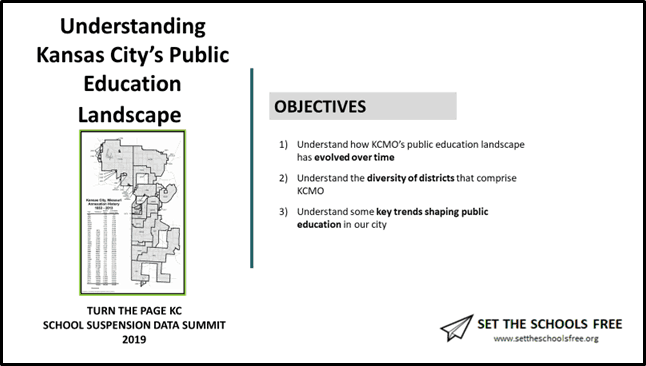How did Kansas City become a city of 14 school districts and 21 public charter schools? Set the Schools Free crossed the KCPS border to find out….
Earlier this week, I participated in Turn the Page KC’s 2019 School Suspension Data Summit. This Summit was a day-long gathering of Kansas City community stakeholders, parents, students and school teams to raise awareness of lost instructional time, what local data tells us about the disparity in school suspensions by race and gender, and the correlation to chronic absenteeism. Click here to read more about the Summit, and to access the city-wide suspension data prepared by Dr. Eric Camburn at UMKC’s Urban Education Research Center.
According to Turn the Page, Missouri is one of 11 states that reported larger gaps than the national average between the suspension rates of black students and white students for both boys and girls. In 2015, one in four black male K-3 students in the City of Kansas City were suspended from school – and the overall number of suspensions in KCMO has actually gone up over the last four years. The point of the Summit was to move the conversation beyond “OK, we have a problem” to begin examining the underlying causes of this problem. Why is this happening? And what can we do about it?

One of the challenges with talking about public education in Kansas City, of course, is that we don’t have just one school district, we have 14. Those 14 districts straddle four different counties. And one of those districts – KCPS – also has 21 different public charter school operators. Each of these districts and schools serve different student populations, and have their own unique challenges.
The above presentation provides a very short overview of how we came to be a city of 14 different school districts, and the different forces (namely, race + economy) that have shaped our landscape over the last 70 years. And it also, I think, provides a bit of context and insight to both the opportunities and inherent difficulties involved with city-wide approaches to supporting public education in Kansas City.